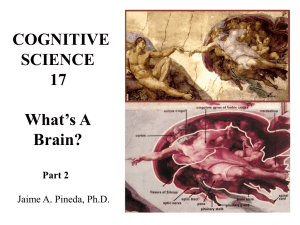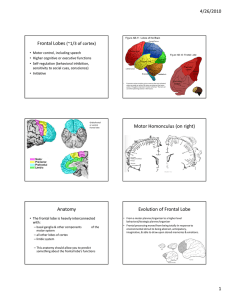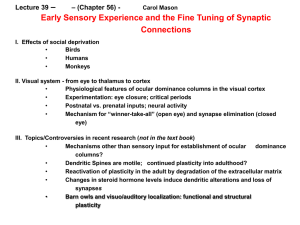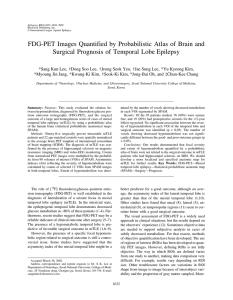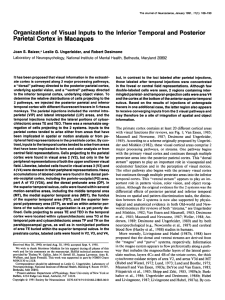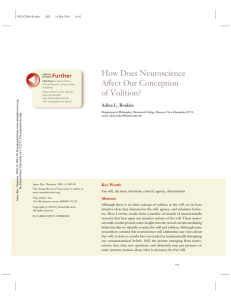FoundationsJI-EarlyChildhood.1112
advertisement
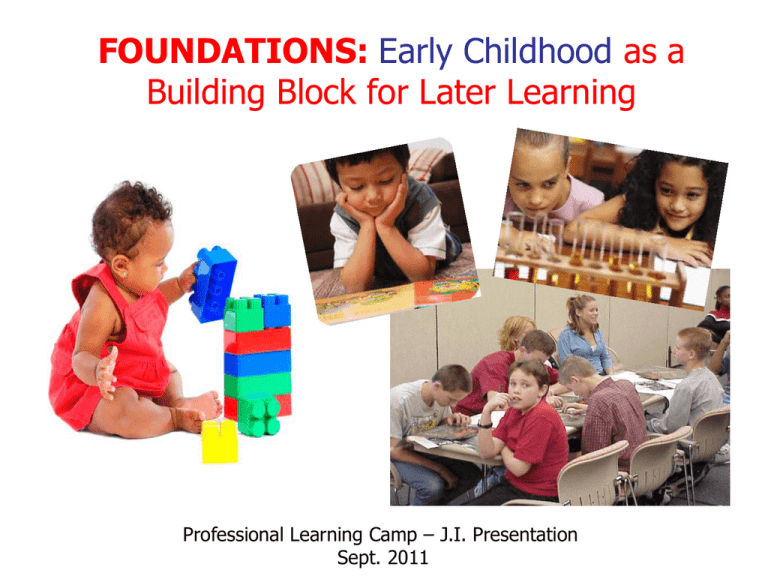
FOUNDATIONS: Early Childhood as a Building Block for Later Learning Professional Learning Camp – J.I. Presentation Sept. 2011 Connecting… “That’s Me!” Statement If/when a statement pertains to you, jump up and yell, “That’s me!” Right to pass Quick Elbow Partner Chat… 1. 2. 3. Did this energizer help you feel more or less comfortable in the room? How might you be able to use this activity with Junior or Intermediate students? Why do you think connection or reconnection activities are important? Today… We’re going to begin with early brain development, and then move to how this impacts the teaching and learning of Junior & Intermediate students Brain Research Is Meeting Education at a Rapid Pace The Physiology of the Brain The Cerebellum The Brainstem The “Old” or “Reptilian” Brain The Cerebrum - The “New” Brain The Temporal Lobe The Parietal Lobe The Occipital Lobe The Frontal Lobe Quick Elbow Partner Chat… Knowing about the late maturity of the pre-frontal cortex, what implications does this have for our work with adolescents and teens? Implications… Limbic system (old brain) matures before pre-frontal cortex Adolescents and teens exhibit… Poor judgment Impulsivity Inability to think of the consequences of their actions Emotional outbursts Increased need for structure and guidance The Developing Brain… The Genetic Factor The Developing Brain… The Environmental Factor Experienceexpectant learning Experiencedependant learning The Importance of Brain Plasticity and Cortical Complexity Plasticity: brain’s capacity to change Cortical complexity: number of synapses (neuron connections) Understanding Neurons and Neural Pathways… use it or lose it! Temporal lobes Neglected Child Healthy Child Brain stems Other Periods of Significant Brain Development Ages 6 through puberty Most growth in temporal & parietal lobes but some in pre-frontal cortex too Language, spatial relations Optimal period for development of integrative & executive functioning – increased myelination Two Important Areas in Regard to Language Skill Development: Left Hemisphere The Development of Oral Language Skills is Critical Students enter school with varied oral language skills different neural pathways between Broca’s area and Wernicke’s area TV and video gaming should be limited To recap… 1. 2. 3. Basic brain structure Brain development – genetics and environment Importance of neural complexity But, how does the brain learn a new concept or skill? The Cerebrum The Brain’s Hemispheres Learning to Ride a Bike…. 1. 2. 3. Quick Small Group Chat… Given what we have learned this morning, let’s imagine this is the first day of school and you are standing in front of your Grade 9 class. You have never met any of these students before. What do you already know about these learners? What will you need to consider in your teaching? Learners Arrive in Our Classrooms with Different Brains Genetic factors Environmental factors We have no control over who walks through our doors Students are not all starting at the same developmental point regardless of age/grade Assessment is critical Considerations For Teaching Learning moves from the big picture to the details. Examples: A novel study Math Concepts Physical Education Considerations For Teaching Learners need a wide range of experiences Teach concepts and skills many times and in many different ways Teach for deep understanding: Connect learning Integrate learning across strands Questions/Comments/Reflections Good Luck This Year!





